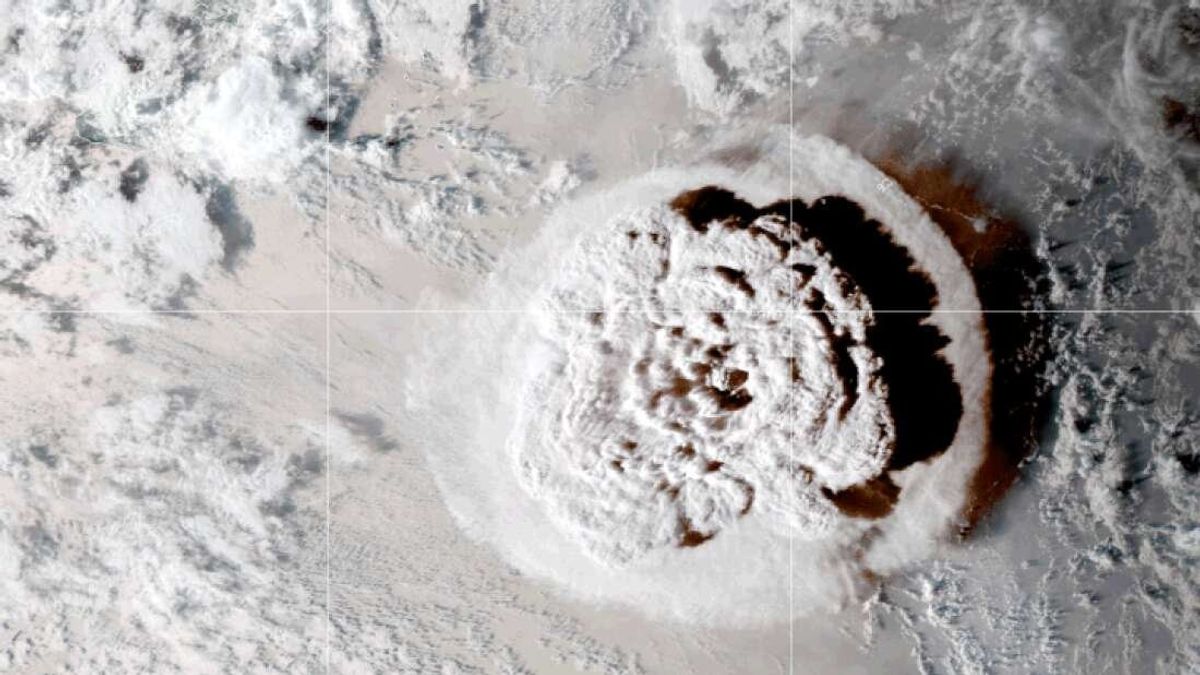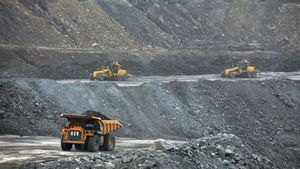JAKARTA - The volcanic eruption that rocked the Pacific island nation of Tonga in January was so powerful that it spewed ash into the mesosphere, the third and coldest layer of Earth's atmosphere.
The ash rose to a height of 58 kilometers above Earth, the volcanic plume was likely the highest ever measured by a satellite, according to NASA. This is more powerful than the eruption of Mount Krakatoa, in 1883, which reported volcanic ash reaching a height of 27 Km.
NASA was able to measure the plume of smoke because two weather satellites happened to be in the right place at the right time. The satellites took still images and infrared observations showing the eruption from above.
In just about 30 minutes after the eruption, ash, steam, and gases from underwater volcanoes rise from sea level to the mesosphere. The second explosion rose almost as high, reaching 50 kilometers (31 miles) - placing it just around the border between the mesosphere and stratosphere, the next layer below.
Tonga recently experienced the eruption of the Hunga-Tonga-Hunga-Ha'apai volcano. Researchers are studying the past dormancy patterns of the volcano to work out what it will do next. See their findings here: https://t.co/t6m7N2EhyJImage: NASA Earth Observatory pic.twitter.com/0micMlZedy
— Conduct Science (@ConductScience) February 17, 2022
The explosive combination of extreme heat from the volcano and moisture from the seawater helped propel the volcanic plume to its initial height.
"It's like hyper-fuel for a mega-thunderstorm," Kristopher Bedka, an atmospheric scientist at NASA, said in a statement. "The waves were 2.5 times higher than any thunderstorm we've ever observed, and the eruption produced an incredible amount of lightning."
When volcanoes spew emissions into the atmosphere, they can actually cool for a while both locally and globally. That's largely due to the sun-reflecting sulfur dioxide particles found in volcanic ash. According to NASA, because there's so much water vapor and not much sulfur dioxide in this blob, it probably won't have that effect.
The plume from the historic eruption rose and oozed for 13 hours on January 15. But some of the remaining aerosols have survived and can stay in the stratosphere (just below the mesosphere) for a full year.
The eruption also triggered a massive tsunami that hit Tonga. The archipelago was cut off from much of the world for days after the disaster cut an undersea cable connecting it to the internet.
Soon after, rescue efforts brought COVID-19 cases to the country and sparked an outbreak in the island nation, which only recorded its first infection in October 2021. Now, recovering from all the damage inflicted on Tonga by the volcano and tsunami will be costly. . According to World Bank estimates, the destruction amounted to 90 million US dollars, or roughly the equivalent of 18 percent of the country's GDP.
The English, Chinese, Japanese, Arabic, and French versions are automatically generated by the AI. So there may still be inaccuracies in translating, please always see Indonesian as our main language. (system supported by DigitalSiber.id)













